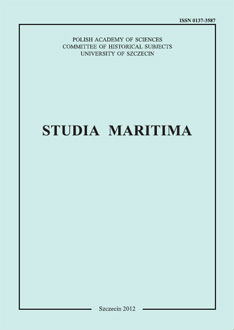Kirche in Norwegen in der Politik der deutschen Besatzungsmacht und norwegischer Faschisten
The Church in Norway vs. policy pursued by German occupants and Norwegian fascists
Author(s): Magda Gawinecka-WoźniakSubject(s): History
Published by: Wydawnictwo Naukowe Uniwersytetu Szczecińskiego
Keywords: World War II; the Nazi German conquest of Norway; the Lutheran Church in Norway; attitude of the German Third Reich and Quisling‘s government toward the Lutheran Church
Summary/Abstract: The paper is aimed at presenting policy pursued by German occupants and Norwegian fascists toward the Church in Norway during World War II. Resistance mounted by the Lutheran Church to the Nazis, in Norwegian literature referred to as "kirkekampen" (struggle waged by the Church), is hardly addressed by Polish authors. The article is nearly completely based on Norwegian literature, and printed sources are used as primary source material. In 1940, after Norway had been invaded, the Norwegians had to face a new (occupation) reality. The authorities of the German Third Reich did not however follow a uniform policy toward the Church in the occupied Europe. In Norway, the Church was state-run, in other words the state was obliged to propagate Lutheran religion and enable Norwegian citizens to follow their religious practices. In 1940, the occupants did not immediately take action against the Church. Furthermore, both the Nazi Germany and the NS assured the invaded about their positive approach to religion. They did not intend to interfere in the matters of the Church as long as the clergy did not oppose the new political situation. Events that took place at the turn of 1940 and 1941 proved that the German Third Reich and the NS planned to connect the Norwegians to gas supply system. Nevertheless, the Church ceased to be loyal toward the occupants when the Norwegian law was being violated by the Nazis. The conflict between the Church and the Nazi authorities started at the end of January and the beginning of February 1941, yet it had its origin in political and religious developments that took place in Norway during the first year of occupation. Massive repressions against the clergy began in 1942, and bishops were the first to suffer from persecution. In February 1942, they were expelled, lost their titles and had to report to the police regularly. Very soon they lost the right to make speeches at gatherings. It is worth mentioning Bishop Beggrav who was interned between 1942 and 1945, i.e. longest of all clergy members. Since temporary expelling of priests from their parishes paralyzed their pastoral activity, in 1943 the Ministry of Church and Education began to send the "non grata" pastors to isles situated north of Norway. Nevertheless, the internment conditions in which the clergymen lived were much better than the conditions in which Norwegian teachers were being kept. What contributed to such a difference was strong objection stated by the German Third Reich against continuing the conflict with the Church. Just as in the Nazi Germany, Hitler postponed taking final decision about the future of the Norwegian Church and planned to settle the matter after the war. In this way, he prevented Quisling from pursuing his own policy toward the Church.
Journal: Studia Maritima
- Issue Year: 27/2014
- Issue No: 1
- Page Range: 61-86
- Page Count: 26
- Language: German

